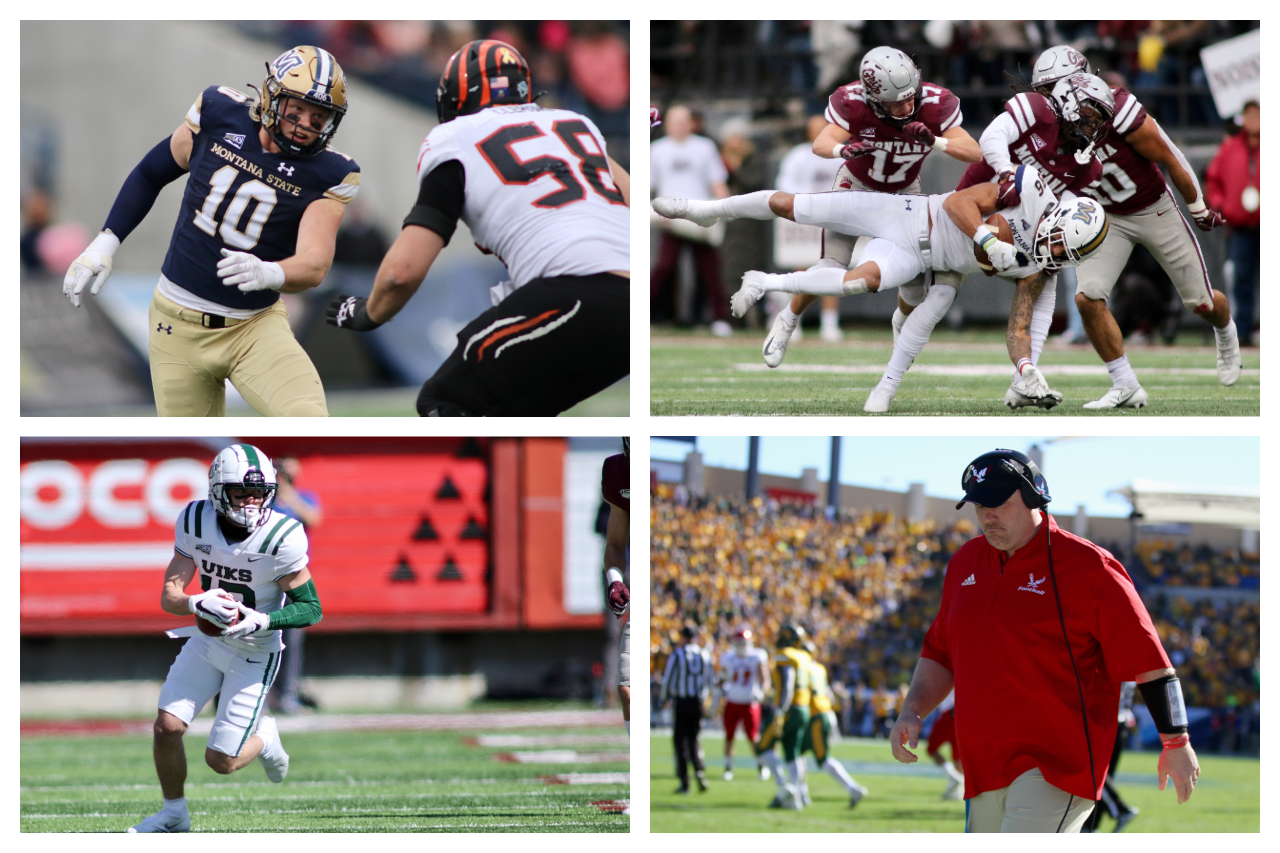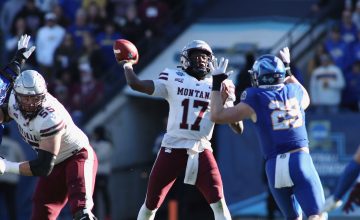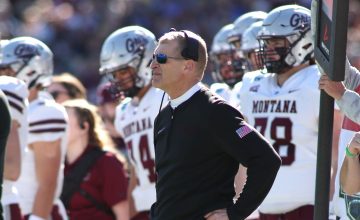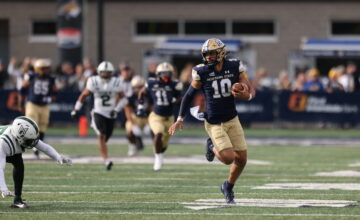SPOKANE, Washington — How do you see the cake before it’s baked?
It’s the question Eastern Washington Aaron Best has asked himself for years as he’s searched Washington state’s endless string of small towns looking for top talent to recruit to Cheney.
In its broad strokes, the analogy might be the best way to describe recruiting in this day and age in the Big Sky Conference. Although when it comes to making the cake — and what ingredients you need to put in it — football teams across the Big Sky are shopping for different items at different stores.
Transfers can instantly reload your roster. But former high school Gatorade Players of the Year like Montana State senior All-American running back Isaiah Ifanse (Washington) and Weber State senior All-American running back Josh Davis (Weber State) came to their respective schools out of high school. Sac State senior All-American wide receiver Pierre Williams is a four-year stater who prepped two hours south of Sacramento.
In fact, only Portland State defensive end V.J. Malo, Montana cornerback Justin Ford and Sac State dual-threat quarterback Asher O’Hara are transfers who made the Big Sky’s preseason All-Big Sky squad. Each, of course, spent last season at their respective squads.
Identifying high school talent worth developing or hitting the free agent market with ferocity: it’s a formula head coaches throughout mid-major college football are searching for.
Montana and Montana State remain steadfast in wanting to attain, then develop homegrown talent. Each university sits in two of the most quintessential boom towns in the West. Bozeman and Missoula have turned into cities with an urban feel and plenty to offer young people.
The Bobcats and the Grizzlies have also been able to use urbanization and the longstanding tradition of their respective programs to elevate their level of recruit that comes from either out of state or from the transfer portal. All the while, the rivals continue waging war for the services of the Treasure State’s best football players.
At Eastern, Best has maintained the Eagles’ strong emphasis on Washington-grown products, particularly along the fronts. And EWU has a production line of elite quarterbacks that goes back to the late 1990s when Harry Leons was the first in a long line of prolific gunslingers. As Best enters his fifth season — and his first without superstar quarterback Eric Barriere — maintaining the status quo has been largely the key to EWU maintaining its national prowess.
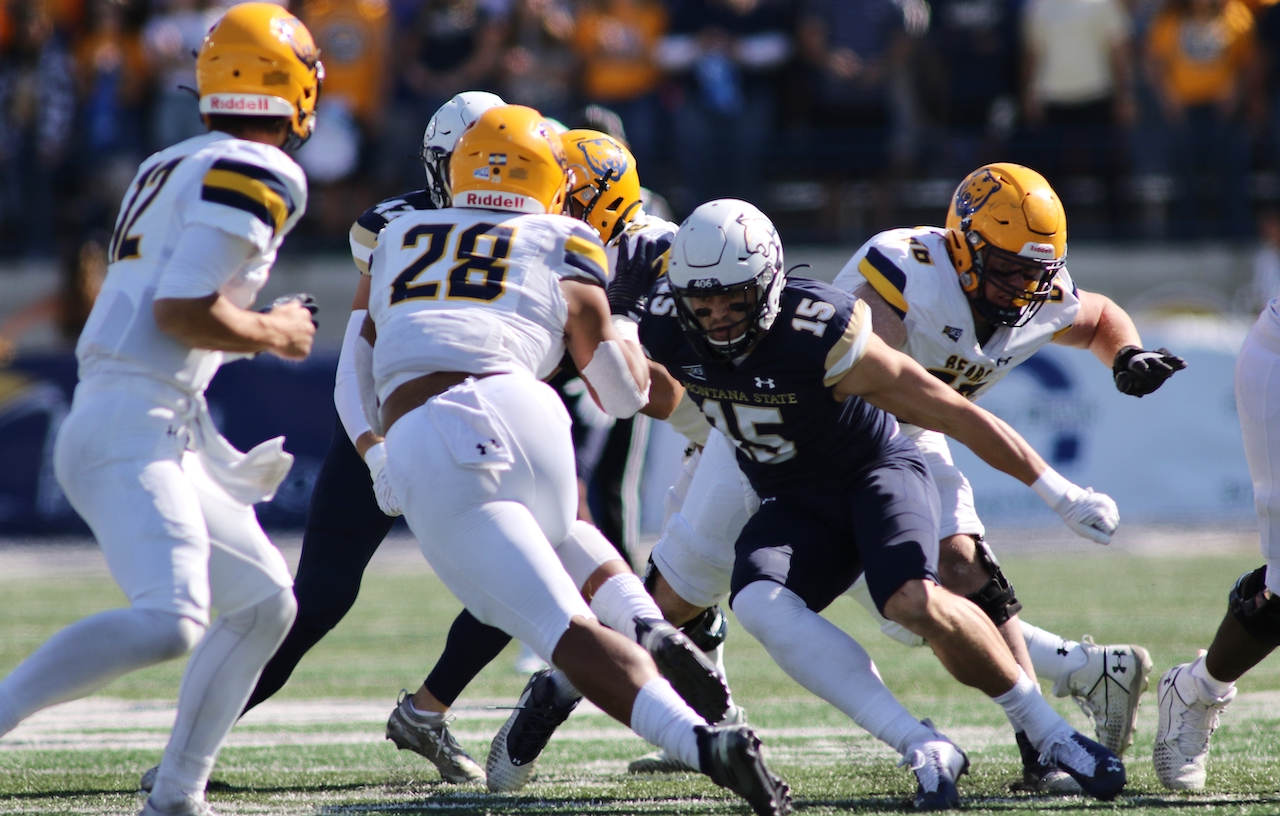
Northern Arizona had the same head football coach for more than 20 years. Since taking over for Jerome Souers, Chris Ball has made waves, earning national recognition for his recruiting prowess. The former Power 5 assistant enters his third fall season and fourth season overall with a 12-16 record. The Lumberjacks went 4-4 in league play behind the emergence of quarterback R.J. Martinez, the Big Sky Freshman of the Year, and running back Kevin Daniels. Is this the year the recruiting comes to full fruition and NAU returns to the top tier of the Big Sky? Or are all the star-ranked recruits coming to Flagstaff simply a product of NAU’s recruiting territories?
Bruce Barnum is trying to figure out what to do at Portland State. The state of affairs in the world, both when it comes to community health and local & state politics, have hindered athletics across the City of Roses. What is Barney’s draw? If the second-largest metropolitan area other than Sacramento in the Big Sky isn’t the lure it used to be, where does Portland State football pivot?
Beau Baldwin proved he can recruit top-notch Big Sky talent. He found and developed Cooper Kupp, the best slot receiver on the planet and last year’s Super Bowl MVP for the Los Angeles Rams. The task in San Luis Obispo, California is a total different challenge than it was when Baldwin was the head coach at EWU (2008-2016), although it’s not the fault of the epic beach town flanked by the Morros Mountains. Turning a triple option team into a spread squad is an entirely different story.
“We are finding ways to bring the guys we need to Cal Poly,” Baldwin said. “We have academic challenges for sure, but it’s more challenging because of the evolution of cost of living in places like San Luis Obispo than finding quarterbacks and receivers to run our offense.”
Brent Vigen inherited a dynamite roster flush with a whole collection of the most talented players in the conference when he took over at Montana State. As he enters Year 2, plenty of the studs brought to Bozeman by Jeff Choate still fortify the roster of one of the FCS’ top contenders.
Yet the Bobcats have an overhaul at their offensive skill players, bringing in a collection of transfers to fortify the ranks, including several with Mountain West ties. To the surprise of many, one of those transfers is Sean Chambers, a starter at Wyoming for parts of each of the last three seasons and a quarterback who has spent as much time in Vigen’s system as incumbent sophomore Tommy Mellott. It’s only surprising because Mellott went on one of the great runs in FCS playoffs history, guiding the Bobcats to the national title game last January. Mellott is the preseason All-Big Sky quarterback yet he is in a competition with an FBS transfer who knows the system.

Bobby Hauck has proven he’s as good at projecting and developing as anyone in league history. Players like Colt Anderson, Marc Mariani and Chase Reynolds went from walk-ons to NFL players in Hauck’s program. But with the ever-shifting landscape of college football, Hauck has had to utilize the transfer portal as he chases the only thing that has eluded him at Montana: a national championship.
Whether the formula includes sharpening an already successful strategy, capitalizing on an ever-shifting national landscape or revamping your tactics all together, recruiting in the Big Sky Conference is vast, it’s multi-faceted and it’s completely different depending one which of the 12 football programs in the league you are connected to.
“Recruiting in the Big Sky, when people think 10 to 12 years from now and looking back on what’s now, how do you see the cake before it’s baked? Where do you get the ingredients before you put it in the oven? What temperature, how long? You need a little luck splashed in there and everybody’s got a different plan,” Best said at the Big Sky Kickoff in Spokane in July.
“You have to see things five years in advance. And I think the hardest thing as a coach, not X’s and O’s wise, is evaluating high school talent. And I think some guys have it. Some guys can develop more of it. But I think we’ve done a pretty good job and had some really good ones over the years.”
“Next to our relationship with our players, recruiting is the No. 1 most important thing in our program” — Chris Ball, Northern Arizona
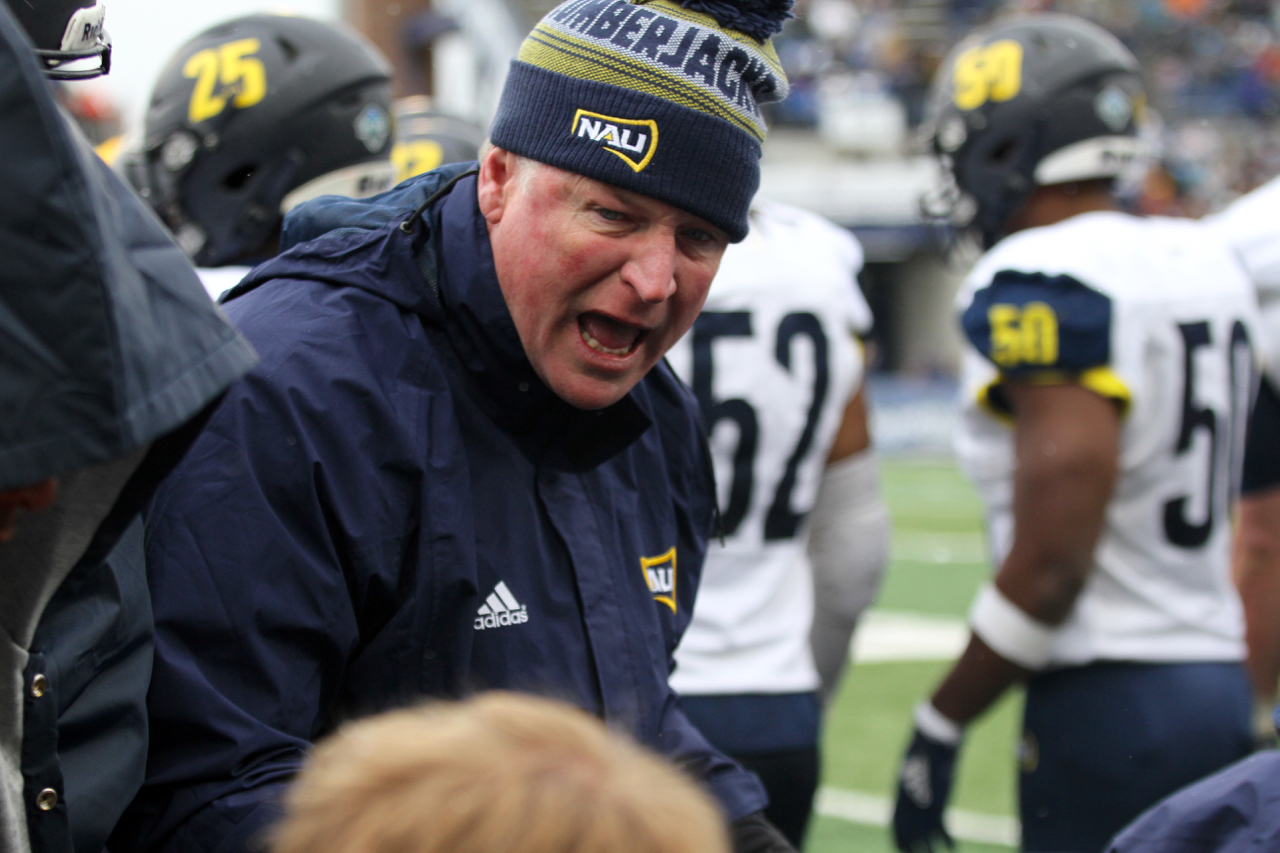
Since Ball took over ahead of the 2019 season at Northern Arizona, the Lumberjacks have indeed put a high priority on bringing in highly rated recruits. In Ball’s first recruiting class, he signed 24 players. That group was ranked just outside the Top 10 among FCS schools by HERO Sports.
In lies the conundrum of the FCS and the Big Sky. In the few seasons HERO Sports did such rankings, Montana State finished no higher than 45th and Montana never appeared in the top 100. Yet the Griz won 10 games and advanced to the quarterfinals of the FCS playoffs in 2019 and 2021. Montana State has been to the playoffs three seasons in a row with Final Four runs in 2019 and 2021, the latter culminating in a semifinal win over South Dakota State to thrust MSU into the national championship game.
From that 2019 class, NAU safety Morgan Vest has turned into an All-Big Sky player (2nd team defense in 2021), as has wide receiver Hendrix Johnson (honorable mention all conference). Because Ball has defined NAU’s primary recruiting territories as the state of Arizona, Southern California and the state of Texas (Flagstaff now has a direct flight to DFW in Dallas), the Lumberjacks will almost certainly sign more star-rated players than most of the rest of the Big Sky.
Developing those players the way the Montana schools and Eastern Washington do — that is, turning kids from rural outposts a universe away from star ratings in high school into all-conference players — is the next step if Ball and his staff want to help NAU return to the FCS playoffs for the first time since 2017.
“I learned a lot about evaluating talent coaching in the FBS and the Power 5,” said Ball, who coached as an assistant at Washington State (2000-2002, 2008-2011), Alabama (2003-2006), Pitt (2007), Arizona State (2012-2015) and Memphis (2016-2018) before taking over at NAU.
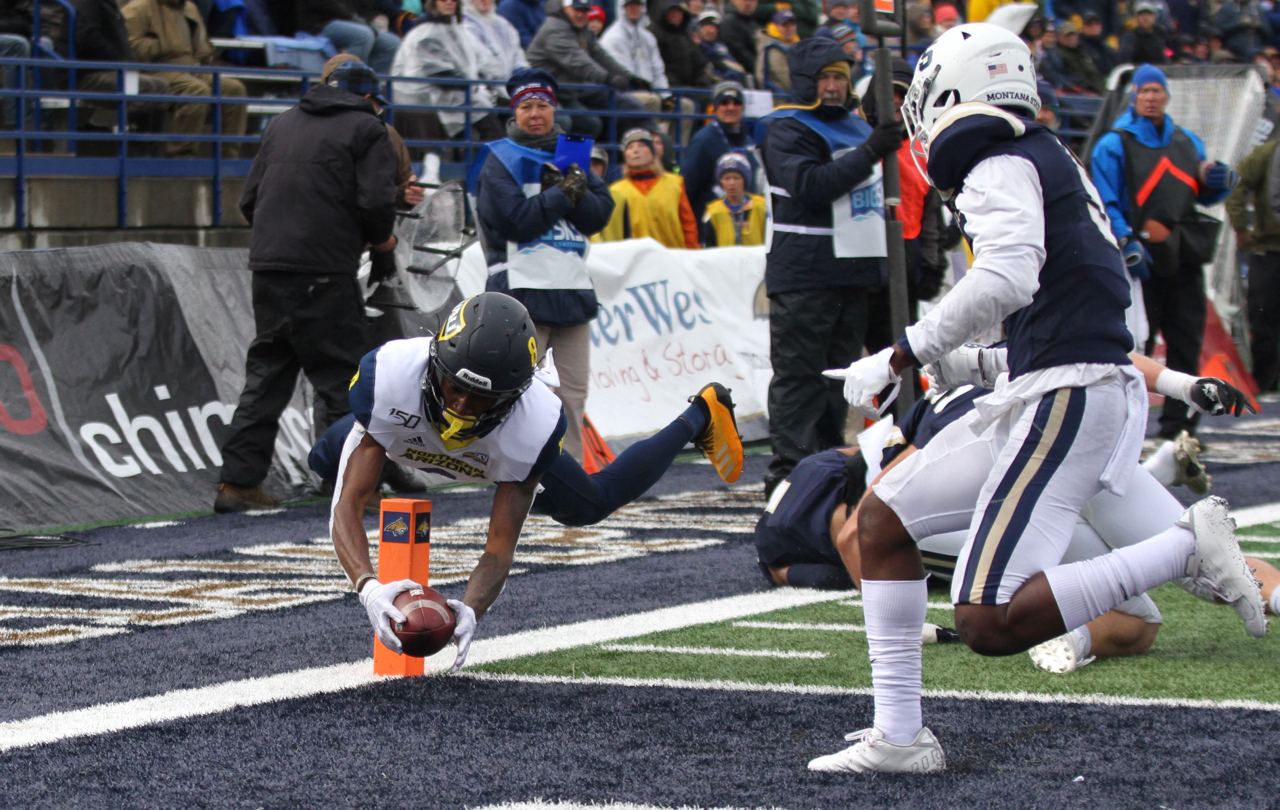
“We look for character, smarts, work ethic, mental toughness, and talent. We’re not just going to take someone because they’re talented, because if you’re talented and you don’t have those traits, you’re not going to come in and get any better.
“That’s important, especially if you’re going to develop guys. So you got to be able to bring players in here that can get bigger, can get stronger, and the projection part of it is big.”
To help detail the evaluation, Ball said when potential prospects come to camps in Flagstaff, the coaches diagnose and measure all sorts of body type metrics, from hand size to knee size to wing span to height and weight. Then the NAU staff looks at the last 10 years of All-Big Sky players at each position, their size, their speed, and compares the players they are recruiting to the successes of years past.
NAU has signed highly regarded recruiting classes for several years in a row under Ball, including two of the top young players in the league as part of the Class of 2021.
Martinez burst onto the scene in his first start, hitting Johnson for a nine-yard touchdown with 7:53 to go to help NAU earn its first win over Arizona since 1932 in his college debut. That win was the first of eight starts last season for the rookie, who had his ups (like throwing for 369 yards and three touchdowns against Idaho State) and his downs (like NAU getting blasted 44-0 by Sac State) during a rookie year that saw the ‘Jacks finish 4-4 in league play.
“For his age, he so mature,” Ball said. “We looked for that in recruiting. And he doesn’t get caught up in all the success. Sometimes, you worry about the freshman who has all the success. And most of the time, you see some drop off there. I haven’t seen any of that.
“He’s leading within the framework of his own personality. He’s not trying to be somebody he’s not.”
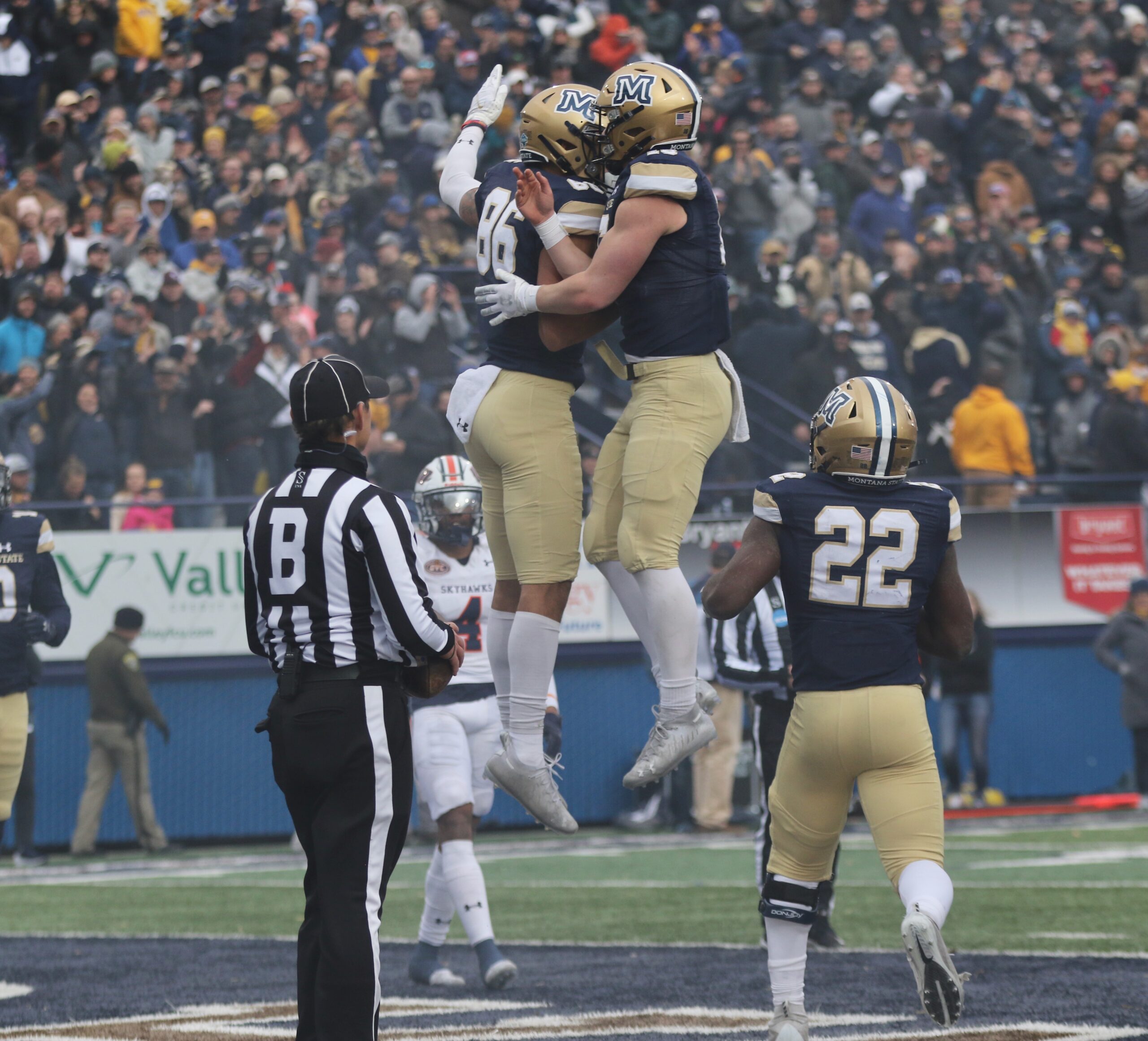
Highly rated prospects can be a fun publicity avenue for a football program. But Troy Andersen had no stars and two D-I offers coming out of Dillon, Montana before owning the Big Sky from 2017 until last season for MSU, ultimately becoming a second-round draft pick by the Atlanta Falcons.
Andersen is an anomaly. Callahan O’Reilly, MSU’s other All-Big Sky inside linebacker, is a former walk-on quarterback from Bozeman. Montana’s salty group of linebackers includes walk-ons turned all-conference studs like Patrick O’Connell and Marcus Welnel.
NAU is almost certainly never going to have a narrative quite like the schools to the North. But Ball fully embraces the old coaching cliché: sometimes, it’s not about the Xs & Os, it’s about the Jimmy’s and Joes.
“Recruiting is the most important thing in our program. And as a head coach, I have to give our coaches time during their day to recruit,” Ball said. “We talk about this all the time, we say, alright, draw whatever you want to draw up. Man, that play looks really cool, or that blitz looks really cool. But if you don’t have the players to do that, you don’t have a chance.”
“What you want is a program that develops players and you want young players to understand that if I come to Montana State, I can realize some big-time dreams and goals” — Montana State head coach Brent Vigen
The Big Sky programs with the best ability to develop NFL talent has shifted rather frequently over the last 25 years. In the late 1990s and early 2000s, the Griz dominated the conference (12 straight league titles) and dominated the pipeline from the league to the League.
In the late 2000s and early to mid 2010s, Eastern Washington’s highly potent offense helped individuals like Kupp and Kendrick Boure (New England Patriots) put up prolific numbers to boost their NFL pedigrees. Then they became starters in the NFL.
In the mid-2010s, the excellent talent in the state of Utah combined with the excellent eye for that talent from Southern Utah’s Ed Lamb and Weber State’s Jay Hill shifted the NFL’s eye on the Big Sky to Cedar City and Ogden. Miles Killebrew and LeShaun Sims took a chance, coming to SUU from Las Vegas. Hill has helped develop dominant players at all three levels of his defense as well as the offensive line; cornerback Taron Johnson will almost certainly be a key cog in the league-leading defense of the Buffalo Bills this upcoming season.
Last season, however, the attention of NFL scouts turned to Bozeman, Montana. And only part of that had to do with Andersen, the once in a lifetime multi-position dynamo from Dillon.
“A lot has been made about Troy but it’s a deep group this year that has an opportunity to really do some things through the draft or through free agency and you just hope this is the beginning,” Vigen said just days before the NFL Draft. “There’s many, many talented players in the FCS that certainly get overlooked on the recruiting side and we need to identify those guys for a few years down the road from when they were recruited where people keep saying, ‘We need to keep coming to Montana State because they are going to have some guys who are worthy of consideration and worth of being a draft pick.”

Skeptics point to the fact that Andersen, Daniel Hardy (drafted by the Los Angeles Rams), offensive lineman Lewis Kidd (undrafted free agent, New Orleans Saints), wide receivers Lance McCutcheon (Rams) and Kevin Kassis (Seattle Seahawks) were all recruited by Choate. Tre Webb, safety who’s fighting for a roster spot with Andersen in Atlanta, was a transfer from San Jose State brought in by Vigen, a commonality so far as the former Wyoming offensive coordinator continues to mine his still existing Mountain West ties.
And while Choate and his staff did a phenomenal job identifying and projecting — Hardy didn’t play football until his junior year of high school and came to MSU from College of the Siskiyous while Kidd came in as a defensive tackle and turned into a four-year offensive line starter — Vigen has been a part of two developmental-type programs during his time as a player and then coach at North Dakota State, then as the offensive coordinator at Wyoming the past seven years.
Quarterbacks like Brock Jensen, Carson Wentz and Easton Stick didn’t have much recruiting interest coming out of high school. In part because of Vigen’s tutelage, all three went to the NFL. So did Josh Allen, a not recruited at all prospect who went from a junior college in California to Laramie to the Buffalo and is now one of the most feared players in the NFL.
“It’s all about your recruiting and your development,”Vigen said. “It starts with recruiting the right guys and then helping them so that the scouts come to you. The scouts can’t come everywhere. You’ll have years where you have multiple guys, years where you have one, but it’s our hope that the area scouts say, ‘We better make time for Montana State on an annual basis.”

Since taking over at MSU, Vigen has added transfers like Chambers, wide receiver Clevan Thomas (Kentucky), safety Rhedi Short (Arizona), running back Kaegun Williams (San Diego State) and wide receiver Marqui Johnson (Sac State) plus small-school additions like junior college transfer wide receiver Malik Mullins and Division III transfer wide receiver Ravi Alson to the roster. Jeffrey Manning Jr. (Oregon State) returns after an honorable mention All-Big Sky season at safety. Cornerback Dru Polidore came to MSU after a year at Air Force Prep and is expected to contribute. Jared White, a prolific running back out of the Dallas-Fort Worth metroplex who was the area’s leading rusher last fall, is expected to play as a true freshman.
Yet like the story has gone for so long, some of the team’s best players will be ones who were hardly recruited at all. Senior defensive back Ty Okada is one of the best multi-faceted nickles in the country. O’Reilly is a preseason All-Big Sky selection and has been one of Montana State’s top tacklers since he was a sophomore. And Brody Grebe, a preseason All-Big Sky pick at defensive end, is a sophomore from Melstone, Montana (population: 125) that had to go to a prep school in Connecticut to get a full scholarship offer.
“What is most important is bringing in guys this means something to,” Vigen said. “If it means something to them, and they have the desire to work to get better, maybe when they get better and become their best, they are among the best in the conference and the FCS.”
“The game has changed” – Portland State head coach Bruce Barnum
It’s treading into muddy waters to diagnose the WHY of what has transformed in Portland. But Barnum knows that much of what drew prospects to the City of Roses and to his football program — internship opportunities, fast-paced urban living — have been altered since the Covid-19 pandemic changed the world.
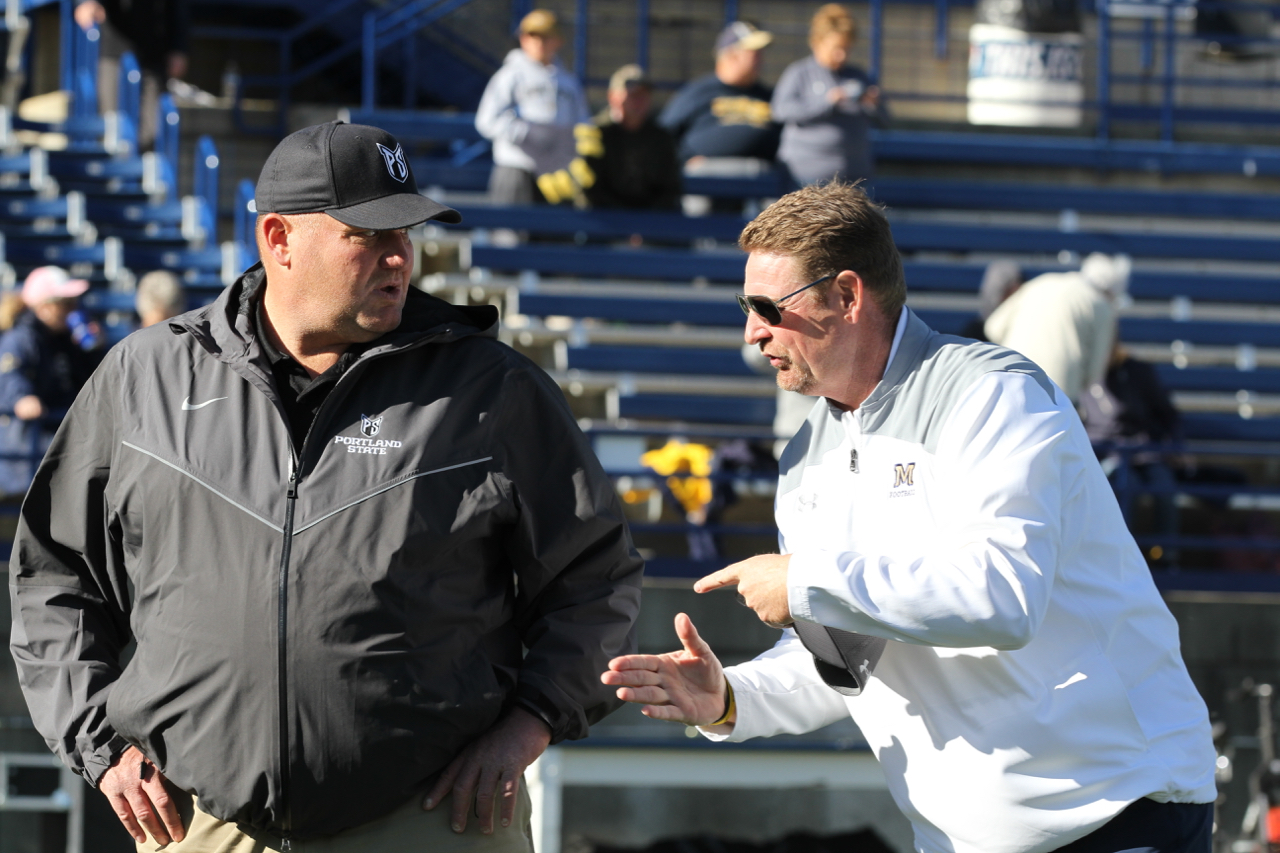
“It has changed, the game changes. We’ve talk about because our biggest advantage used to be Portland, Oregon,” Barnum said. “In recruiting, Portland, Oregon was my ticket. For parents, for kids, I’d bring them on a trip and show them where they’re going to have an internship,. They could get on the MAX, they can walk five blocks, and be at Pioneer Square. But that has changed. I don’t care what anybody says. They’ll probably rip me for saying it. But Portland, Oregon has changed. Period.”
Barnum’s first season in 2015 was a landmark year for PSU football. Over the last near-decade, Barnum has had to fight the uphill battle of coaching at a city commuter school with very little Division I tradition while also batting the narrative that football is a finite offering at Portland State.
A defense led by former Arizona transfer Patrick Onwuasor helped Barnum lead the Vikings to their best season in program history in his debut campaign in 2015. Despite riding a bus all over the Western United States, Portland State posted wins over Washington State and North Texas, marking one of the few times ever an FCS team beat two FBS teams in the same year. The Viks ended up with nine wins and a seed in the FCS playoffs for the first time in their program’s history.
Over the next three years, Barnum tried to bring the program away from a heavy reliance on FBS and JC transfers. PSU only won seven games total between 2016 and 2018, including none in 2017. In 2019, the Vikings went 5-7 with three league wins and in 2021, Portland State posted a 5-6 record with four league victories. Barnum proved he could recruit and develop a quarterback. Davis Alexander was a second-team All-Big Sky selection in 2021.
Entering this season, several of Barnum’s top players have been with the Vikings since the beginning of their college careers. Beau Kelly, a preseason All-Big Sky selection at wide receiver, led the league in catches, yards and touchdowns last season. Anthony Adams is a three-time All-American defensive back that is entering his senior season. Both came to PSU out of high school.
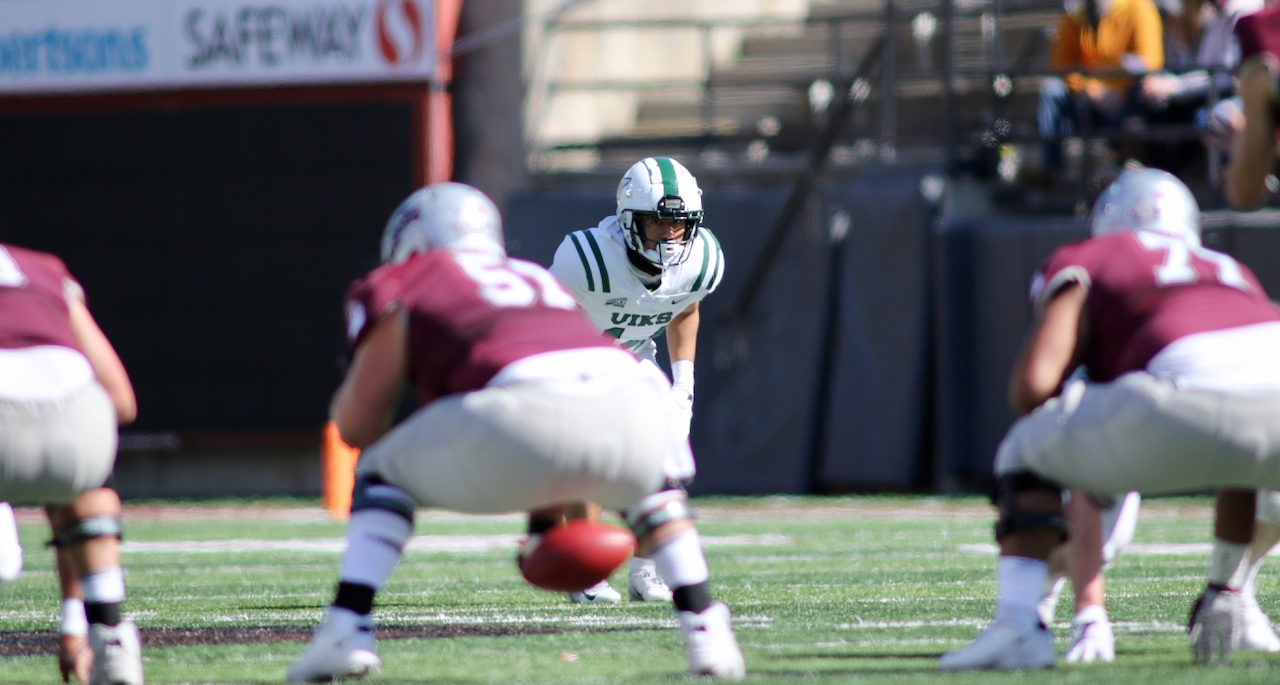
On the other end of the spectrum, V.J. Malo joined Kelly and Adams on the Big Sky’s preseason team at defensive end. He is the leading returner in sacks in the league and a former junior college transfer.
“The recruiting game, the portal, it’s nuts. So we met on it and I was like, Okay, what are we doing here, guys? How are we going to track recruits? What’s our strategy?” Barnum said. “So I’ve swung a little bit to go heavier on the portal but still trust the guys we brought in the last few years. And we still take a core of high school guys.
“But to do it, we probably throw in a larger net out of offers to high school guys. The more you keep casting, the more you’re gonna get the ones you might have not gotten before. We have to keep working on that part because of Portland, Oregon has changed right now the city.”
“We have been an offensive juggernaut for a long time” — Eastern Washington head coach Aaron Best
From Leons to Josh Blankenship, Erik Meyer to Matt Nichols, Bo Levi Mitchell to Vernon Adams, Gage Gubrud to Barriere, every few years Eastern Washington has the same question: who’s next in their conveyor belt of record-setting quarterbacks?
Kupp and Bourne (along with Shaq Hill) were so transcendent, it’s easy to forget that they came after another record-setting trio in Brandon Kaufman, Nick Edwards and Greg Herd. And that group followed a stud collection of pass catches led by Aaron Boyce.

“This used to be a quarterback-driven for long before I even probably was even thought about,” Best said. “At the Big Sky Hall of Fame induction Saturday night John Friesz, Dave Dickenson were introduced. Those guys, it takes time to be great. You’re not just great after one year.
“Tommy (Mellott) was the guy that started in the playoffs playing a good brand of ball. But the unfortunate part is when you have early success, like Tommy, like Eric Barriere, when you don’t have 400 yards, you fail. And that’s unfortunate in so many ways.
“But I think the evolution is the beauty of it. (Sac State head) Coach (Troy) Taylor is using a two quarterback system. There’s transfer quarterbacks all over the league. Barriere and (Portland State’s) Davis Alexander are gone. So we have a situation where teams are deciding if they want to bring in a transfer or develop a guy to be a two, three, four-year starter. And we might have a situation where we come back in a couple of years and we say, ‘Well, hell, there’s seven quarterbacks that are two and three year starters. Who do you determine is the preseason all-league quarterback?”
Prolific skill players aside, it’s been Eastern’s ability to have consistency along the offensive line that has been a huge part of maintaining that reputation as an offensive juggernaut. Best was an offensive lineman at EWU before becoming the offensive line coach, a position he served for most of the 21st century before taking over the head reigns from Baldwin.
“Our system is different than most systems here in the Big Sky,” Best said. “We are not just a ground game, run power, power, power, power, power. We ask those guys to do a lot of things.
“We still build an offensive lineman. We still go after the 230 pound offensive lineman who is not ready to play his first few falls. We are going to bring them on, get used to the things we ask them to do, feed them, make them lift and they are going to play down the line. Everybody wants instant success now. Those aren’t the guys we are going to get. But we haven’t veered from what we do, so we’ve maintained consistency in that element.”
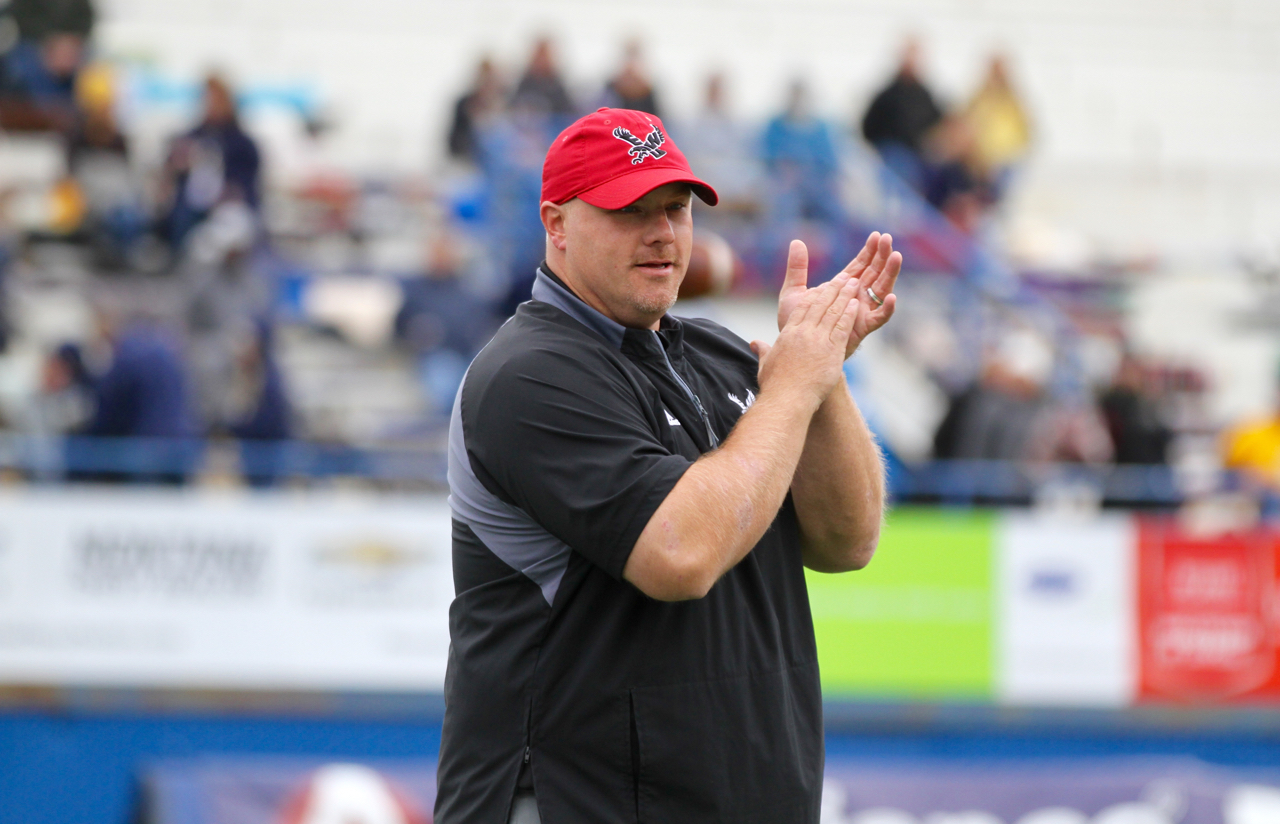
During the 2000s, Montana (and to a certain extent) Montana State recruited hard in the state of Washington. Hauck, who was the special teams coordinator at Washington before taking over in 2003, brought many of his Western Washington connections with him. He also had great success scoring East and West of the mountains in the Evergreen State, bringing in offensive linemen like Cody Balogh and Danny Kistler from the Seattle area and Levi Horn from Spokane. Hauck also found with defensive linemen like Craig Mettler (Walla Walla) and Tyler Hobbs (Spokane) from EWU’s recruiting area. All went on to become All-Big Sky players during their careers.
Choate also had great success scoring talent from Washington, bringing plenty of it with him in the form of transfers like Bryce Sterk, Amandre Williams and Jason Scrempos, all who started their careers at UW in Seattle and finished at MSU.
During Baldwin’s time, neither Montana school had near the presence in Washington as they did before or they do now. Eastern Washington continues to fight to keep the state’s best FCS talent from hopping the borders to Idaho or Montana.
“The high school football in the state of Washington is pretty good,” Best said. “So we’re fortunate, we don’t have to leave a lot. Now, there’s an influx of teams that have come in over the last 10 or 12 years into the state, our level and the FBS level, that now recognize that there’s some good football players.
“Now you have Coach Vigen at Montana State, Coach Hauck at Montana, Coach (Jason) Eck at Idaho, they all want to run the ball. You play to your strengths. We will continue to recruit to and play to ours.”
“I don’t know that that’ll be productive for football, but we’ll see” – Bobby Hauck in 2018 when NCAA first changed transfer rules
Hauck, a man with Butte roots who grew up the son of a football coach and the brother of a football star in Big Timber, has never much wavered on his opinion of the transfer merry-go-round. Yet he’s never been scared to bring in transfers, particularly at quarterback.
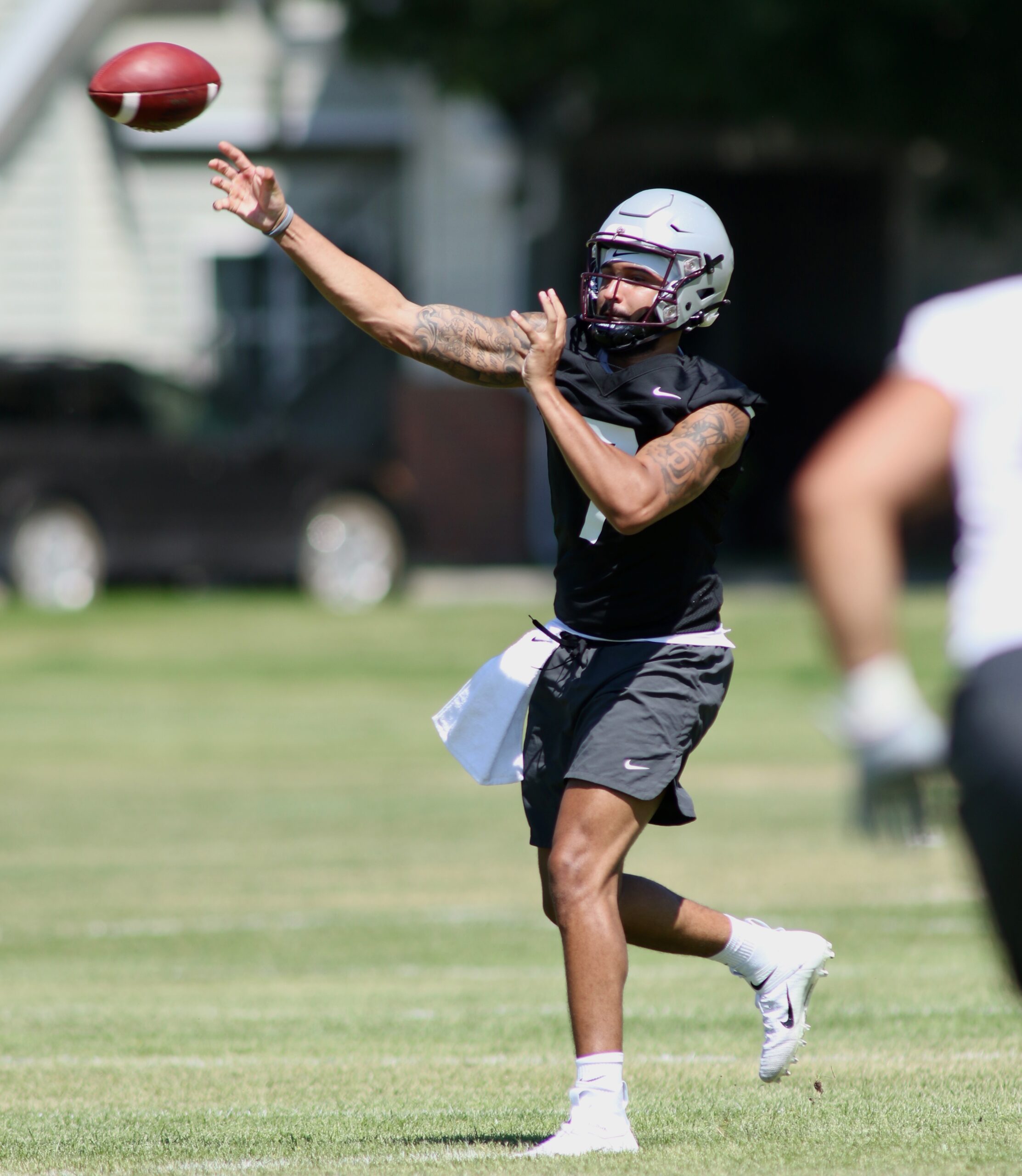
Craig Ochs (Colorado) and Jason Washington (Bowling Green) started for Hauck during his first tenure from 2003 until 2009. Dalton Sneed (Fort Scott CC, UNLV) was the Big Sky Conference’s Newcomer of the Year in 2018, Hauck’s first season back at the helm. Running back Marcus Knight, a junior college transfer, was the league’s Newcomer of the Year the following year. Lucas Johnson, a sixth-year senior who spent time at Georgia Tech and started for nine games at San Diego State last season, is projected as Montana’s starting quarterback this season.
Justin Ford, a former Louisville transfer who led the nation with nine interceptions last season, is a preseason All-American and on the Buck Buchanan Award watch list. Patrick O’Connell is from Montana (Kalispell) and his story has more nuance than just he transferred to UM from University of Mary. But the Big Sky’s preseason Defensive Player of the Year did not start his career in Missoula.
Junior center A.J. Forbes, sophomore defensive end Garrett Hustedt and senior offensive tackle Chris Walker all took first-team reps during the first week of fall camp. Each one came to Montana from Nebraska.
Senior kicker Nico Ramos (Cal/Princeton), senior cornerback Jayden Dawson (Idaho State), senior defensive end DeAri Todd, junior nickel Trajon Cotton (Oregon State) and junior offensive guard Hunter Mayginnes (Washington State) are also all expected to start or play heavily into Montana’s rotation.
“Our No. 1 priority in the transfer market is what kind of guy are they? Are they going to fit with our team? Then it’s the film,” Hauck said. “We do a lot of research on them, personality wise. And that’s not necessarily the way we start with high school kids. Because we feel like we’re gonna raise them up in our program and develop them but transfers, you don’t have as much time so they have to be the right kind of guy and fit in with our mentality and the guys on our team.”
Even Hauck’s son, Robby Hauck, himself a preseason All-American, started his career elsewhere. Hauck IV transferred to Montana from Northern Arizona when Hauck III returned for his second stint leading his alma mater, although that can hardly be considered capitalizing on the current state of transfer affairs.
Coach Hauck is certainly a throw back. When his team’s linebackers reported for camp all wearing country Western get ups, a photo that circulated Twitter seemed symbolically perfect for Hauck’s Griz. O’Connell, Levi Janacaro and Tyler Flink (each from Missoula Big Sky), Marcus Welnel (Helena), Geno Leonard (Missoula Sentinel) and Braxton Hill (Anaconda) were joined by Michael Matthews (Camas, Washington) in a picture that perfectly encapsulated how Hauck dreams he could build a football team – with a bunch of blue-collar walk-ons who grew up in Montana.
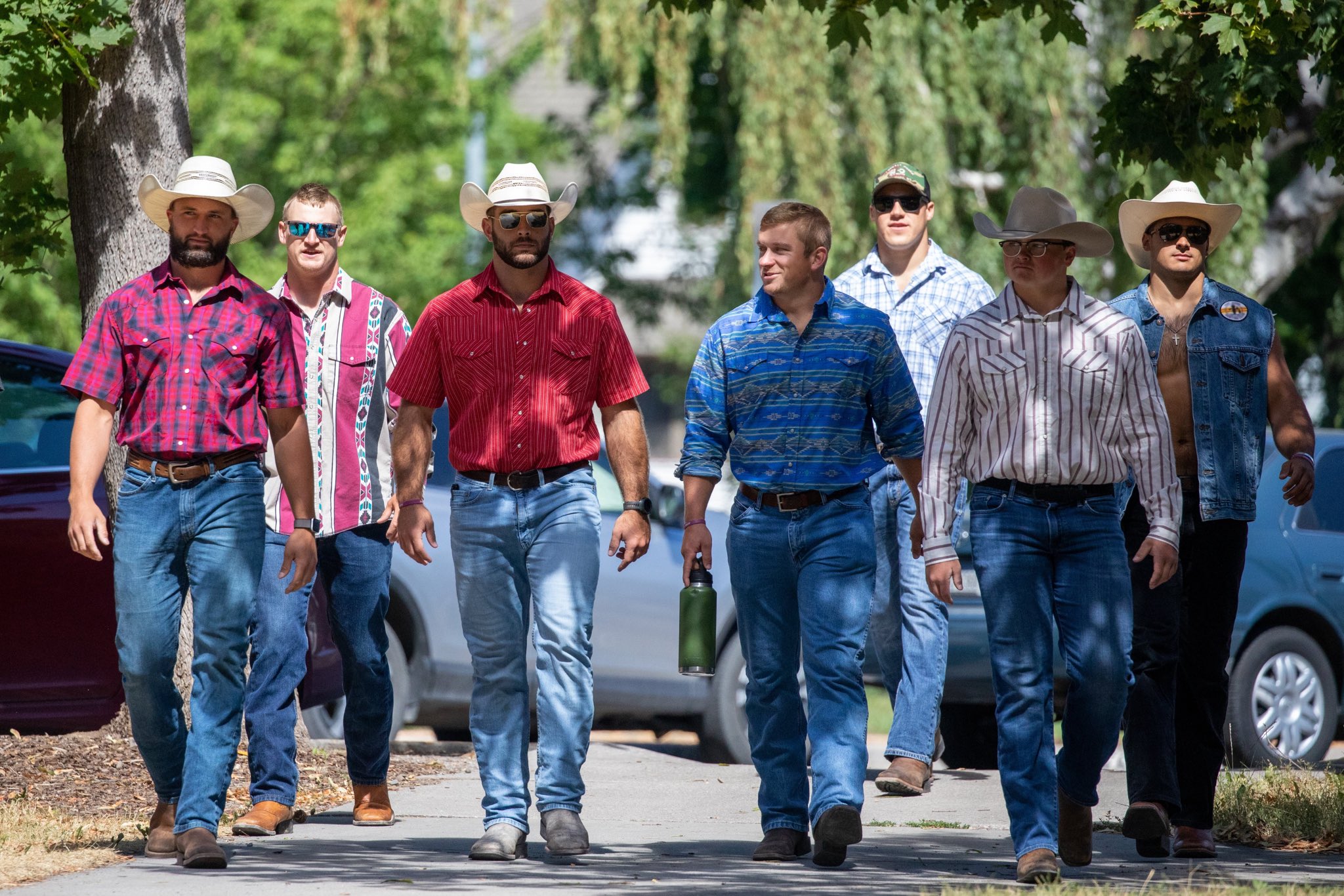
But he also wants to win. And he knows there’s too many good players available in college football’s open free agency to ignore it.
“The way it’s evolved now everyone has the ability to transfer willy nilly repeatedly, it’s an interesting phenomenon,” Hauck said. “I don’t know that it’s good for young people to not have to stick things out. We used to always talk about having to stick things out and maybe see some tough times, some tough situation through and fight through. We’re not doing that as much anymore.
“I think that that’s the way it is. So it’s part of the landscape. I don’t know if it’s good, or if it’s bad for us, probably a little bit of both. What I tell my buddies, they asked me about it, and I say get used to it because it’s part of the landscape. It’s not changing.”
Photos by Brooks Nuanez, Blake Hempstead and attributed. All Rights Reserved.

